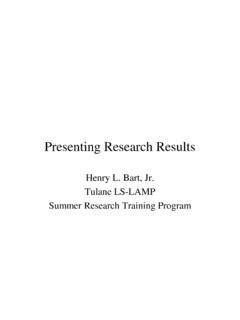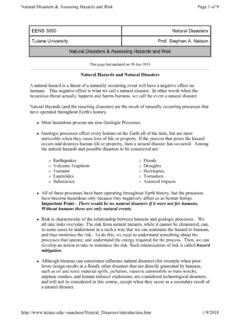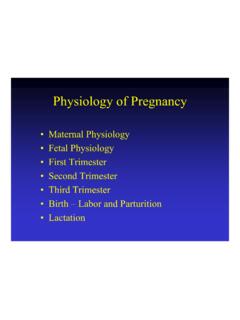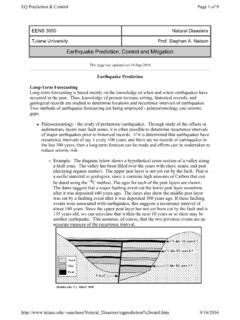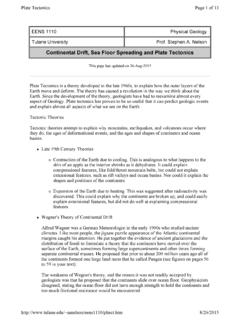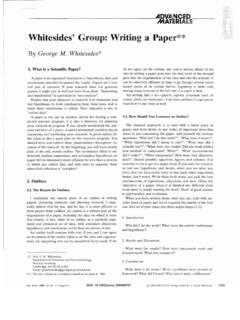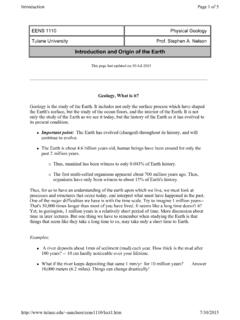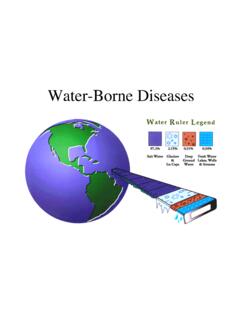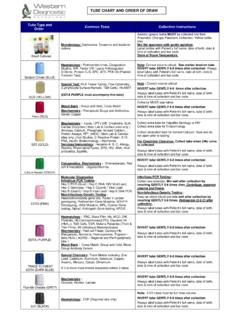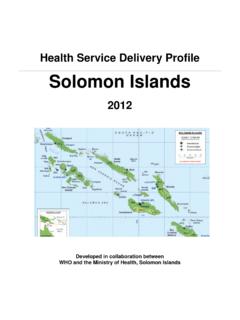Transcription of Plasmodium Life Cycle - Tulane University
1 Plasmodium life Cycle The malaria parasite exhibits a complex life Cycle involving an insect vector (mosquito) and a vertebrate host (human). Four Plasmodium species infect humans: P. falciparum, P. vivax, P. ovale and P. malariae. All four species exhibit a similar life Cycle with only minor variations. The infection is initiated when sporozoites are injected with the saliva of a feeding mosquito. Sporozoites are carried by the circulatory system to the liver and invade hepatocytes (1). The intracellular parasite undergoes an asexual replication known as exoerythrocytic schizogony within the hepatocyte (2-4).
2 Exoerythrocytic schizogony culminates in the production of merozoites which are released into the bloodstream (5). A proportion of the liver-stage parasites from P. vivax and P. ovale go through a dormant period (not shown) instead of immediately undergoing asexual replication ( , stay temporarily at step 2). These hypnozoites will reactivate several weeks to months (or years) after the primary infection and are responsible for relapses. 1. Merozoites invade erythrocytes (6) and undergo a trophic period in which the parasite enlarges (7-8).
3 The early trophozoite is often referred to as 'ring form' because of its morphology. Trophozoite enlargement is accompanied by an active metabolism including the ingestion of host cytoplasm and the proteolysis of hemoglobin into amino acids. The end of the trophic period is manifested by multiple rounds of nuclear division without cytokinesis resulting is a schizont (9). Merozoites bud from the mature schizont, also called a segmenter (10), and the merozoites are released following rupture of the infected erythrocyte (11).
4 Invasion of erythrocytes reinitiates another round of the blood-stage replicative Cycle (6-11). The blood stage is responsible for the pathology associated with malaria (see following pages). The intermittent fever paroxyms are due to the synchronous lysis of the infected erythrocytes. P. malariae exhibits a 72 hour periodicity, whereas the other three species exhibit 48 hour cycles. However, P. falciparum often exhibits a continuous fever rather than the periodic paroxyms. P. falciparum also is responsible for more morbidity and mortality than the other species.
5 This increase virulence is due in part to the higher levels of parasitemia associated with P. falciparum infections. In addition, more complications are associated with P. falciparum because of the sequestration of the trophozoite- and schizont-infected erythrocytes in the deep tissues. As an alternative to the asexual replicative Cycle , the parasite can differentiate into sexual forms known as macro- or microgametocytes (12). The gametocytes are large parasites which fill up the erythrocyte, but only contain one nucleus.
6 Ingestion of gametocytes by the mosquito vector induces gametogenesis ( , the production of gametes) and escape from the host erythrocyte. Factors which participate in the induction of gametogenesis include: a drop in temperature, an increase in carbon dioxide, and mosquito metabolites. Microgametes, formed by a process known as exflagellation (13), are flagellated forms which will fertilize the macrogamete (14). leading to a zygote (15). The zygote develops into a motile ookinete (16) which penetrates the gut epithelial cells and develops into an oocyst (17).
7 The oocyst undergoes multiple rounds of asexual replication (18). resulting in the production of sporozoites (19). Rupture of the mature oocyst releases the sporozoites into the hemocoel ( , body cavity) of the mosquito (20). The sporozoites migrate to and invade the salivary glands, thus completing the life Cycle . In summary, malaria parasites undergo three distinct asexual replicative stages (exoerythrocytic schizogony, blood stage schizogony, and sporogony) resulting in the production of invasive forms (merozoites and sporozoites).
8 A sexual reproduction occurs with the switch from vertebrate to invertebrate host and leads to the formation of the invasive ookinete. All invasive stages are characterized by the apical organelles typical of apicomplexan species. 2. malaria General Clinical Features Features of the Paroxysm characterized by acute febrile paroxysms associated with synchronous attacks ( malaria paroxysms) release of merozoites, antigens, etc (ie, due to blood stage (not liver stage pyrogenic material). or gametocytes) high levels of tumor necrosis factor.
9 Manifestations and severity correlated with paroxysm depend on species and host status between paroxysms temperature is immunity, general health, normal and patient feels well nutritional state, genetics P. falciparum may not exhibit classic recrudescences or relapses can paroxysms (continuous fever). occur over months or years paroxysms become less severe and can develop severe complications irregular as infection progresses (especially P. falciparum) semi-immune may exhibit little (1-2 days fever) or no symptoms 3.
10 Disease Severity and Duration vivax ovale malariae falciparum Incubation Period (days) 8-27 8-27 16->40 6-25. Severity of Initial Paroxysms moderate to severe mild mild to moderate severe Average Parasitemia 20,000 9,000 6,000 50,000-500,000. (per mm3). Maximum Parasitemia 50,000 30,000 20,000 2,500,000. (per mm3). Typical Symptom Duration 3-8 weeks 2-3 weeks 3-24 weeks 2-3 weeks (untreated). Maximum Infection Duration 5-8 years* 12-20 months* 20-50 years 6-17 months (untreated). Anemia ++ + ++ ++++. Other Complications renal cerebral**.

